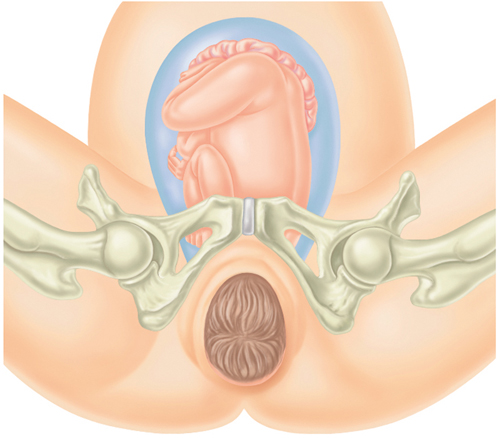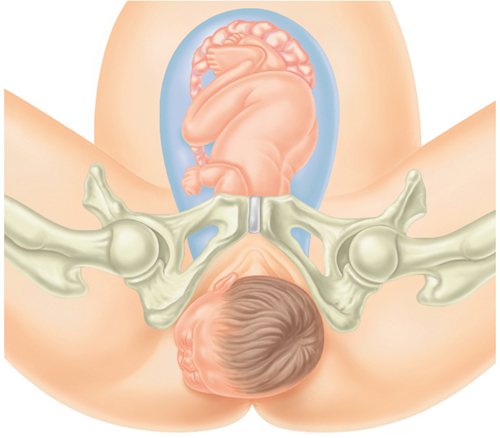Crowning
Initially, the head will
descend with each contraction and then move slightly back up the birth
canal. Eventually, it will descend far enough to be visible through the
vagina at the height of a contraction, known as “crowning,” before it
once again moves back up and disappears. As contractions continue, the
head finally stays in the vaginal opening, and from this point it won’t
be long before your baby is born.
As your baby descends,
the chin will be tucked down toward the chest and the head will rotate
slightly so that your baby is facing your back; this enables the largest
part of your baby’s head to pass through the widest part of the pelvis.
As the head passes out of the vagina, it extends backward so that it
almost touches his or her back. The doctor will check whether the cord
is around the baby’s neck. If this is the case, it will be lifted up and
away from the neck. The doctor will remove any mucus from your baby’s
nose and mouth. Once the head has been delivered, it will return to its
normal position.
The crowning of the head means that the delivery of your baby is imminent and within one or two contractions the head will emerge.

Your baby’s neck will extend backward as the head is delivered and your baby will turn to one side to aid the delivery of the first shoulder.

Once both shoulders are safely delivered, the rest of your baby’s body will slip out fairly quickly.

Your baby will emerge
covered in blood and the thick, greasy substance known as vernix that
provided a protective covering for your baby’s skin in the uterus.
